Whether embraced as bold accents or as a soothing neutral base, green hues offer a versatility and timelessness unmatched by other colors. The color green can transform a space in countless ways—from the subtle whispers of sage that ground a room in earthy calm to the jewel-toned emerald that makes any interior feel elegant and luxurious. With the right guidance, green can adapt to reflect our unique aesthetics, enhance the mood of each room, and connect our living spaces to the natural world. Read on to learn how you can use green as a neutral or as an accent in your own home.
How to Use Green As a Neutral
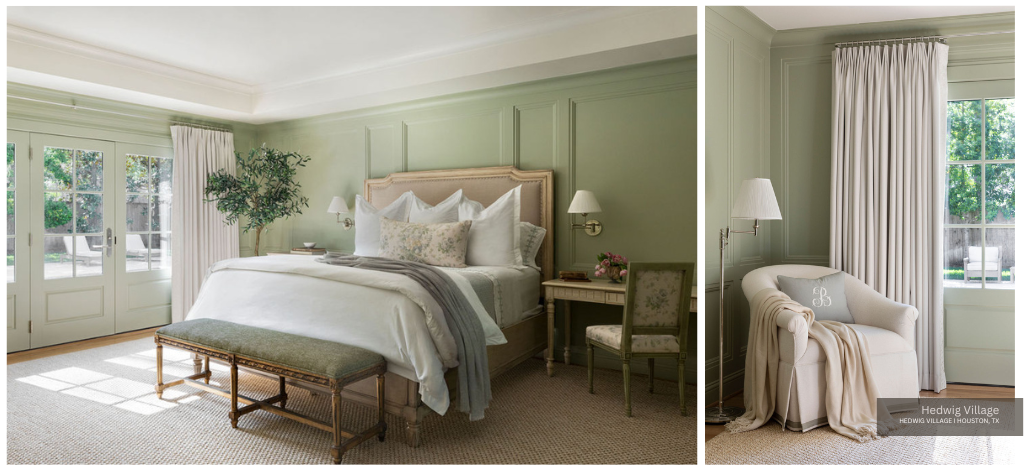
When we think of neutrals, we typically consider colors like beige, gray, white, and black because of their versatility and ability to blend with other colors. However, green—particularly softer, more muted shades—can also serve this purpose due to its natural occurrence in the world around us and its ability to harmonize with a wide range of color palettes.
How does green work as a neutral? Green is abundant in nature and forms the backdrop for countless natural scenes (think the deep forest green in Washington State parks or the vibrant Kelly green of Ireland’s rolling hills). As such, our eyes are accustomed to seeing green as a foundation or backdrop, which can easily translate into interior design.
Certain shades of green, such as sage green, olive green, or moss green, have a subdued quality that pairs well with a variety of other colors, much like traditional neutrals. These greens can serve as a base color in decor, against which more vibrant colors can pop or softer hues can blend seamlessly. Like many neutrals, green also has a calming effect, especially the softer, earthier shades. It brings a sense of tranquility and freshness to a space, similar to how neutrals can create a sense of balance and grounding.
Green can add texture and depth to a room without overwhelming it with color. In its muted forms, it can add a layer of complexity and warmth, much like a rich taupe or a deep charcoal might. There are so many ways to use this color as a neutral—not just a green accent here and there. With that said, here’s how to pick the right shade when using green as a neutral base for your whole room.
Opt for Greens with Earthy Undertones
When using green as a neutral, the key is selecting the right shades. Look for greens with gray, brown, or even blue undertones that lend them an earthy, subdued quality. Whether you opt for a dark green or a light green, these shades will blend beautifully with a wide range of colors, allowing you to change up accent colors over time without having to rethink the entire color scheme of the room.
Anchor the Room with Furniture that Suits the Space
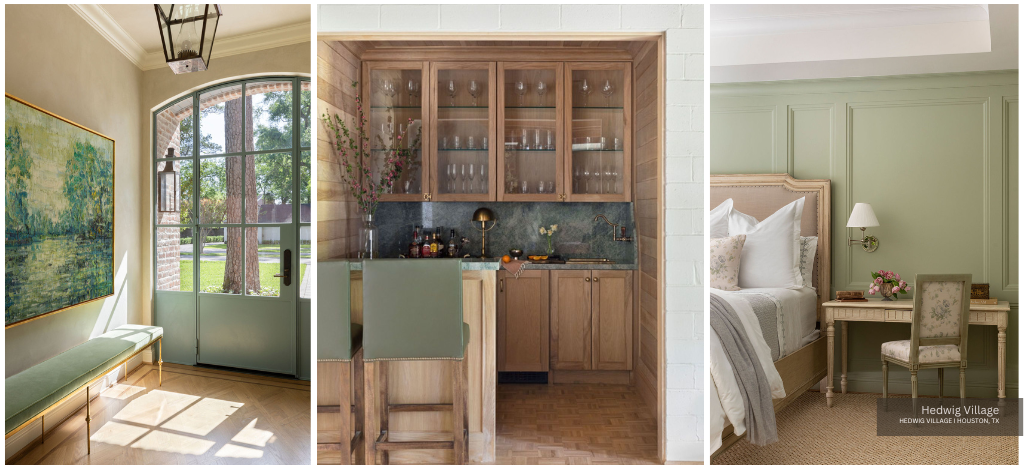
Whether decorating your living room or bedroom, selecting large furniture pieces in muted green shades, like sofas or armchairs, can anchor a room in much the same way that a neutral color would, but with a bit more depth and interest. Homeowners can do the same when selecting paint colors for built-ins. This approach allows the pieces to blend with the surroundings while still providing a focal point. It’s a bit subtler than painting just one wall green.
Green furniture can serve as a versatile base for experimenting with accent colors. Bright cushions, throws, and accessories can pop against a green backdrop, while softer, muted tones can create a more cohesive, subdued look. This versatility means you can refresh your decor with new accents without the large pieces feeling out of place.
Select a Soft Paint Color for a Timeless, Versatile Space
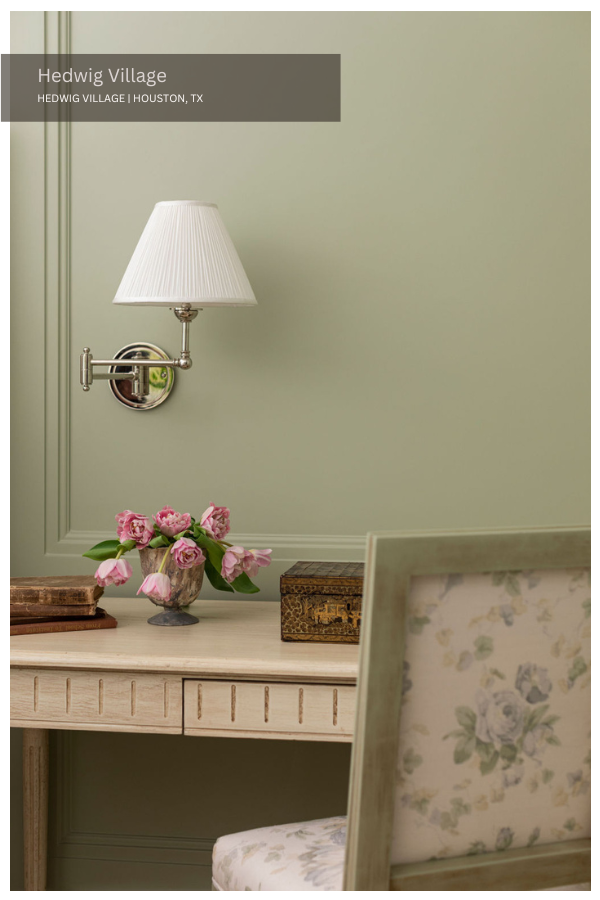
By painting walls in a soft, muted green, you create a serene and subtle backdrop that complements a wide range of decor styles. Unlike stark whites or grays, soft green adds a hint of color and life, reminiscent of the natural world. This can make artwork, furniture, and other accents stand out more vividly, as the green acts as a gentle contrast rather than competing with them.
Soft green walls also easily adapt to changing decor styles and color schemes. Whether you lean towards minimalist, modern, traditional, or eclectic, a muted green wall can support your vision, allowing for an easy transition between different looks without the need for repainting your green living room, bedroom, or kitchen.
Consider How Each Color Green Looks in Natural Light
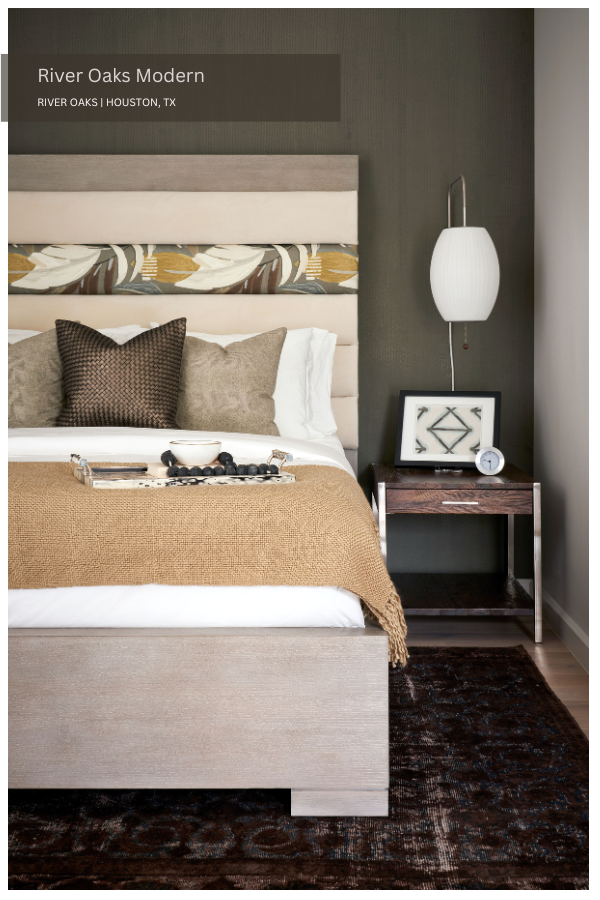
The appearance of different shades of green in natural light can significantly impact the ambiance of a space, and this can change throughout the day or depending on the direction of the sunlight entering the room. Natural light can bring out the true color of green, highlight its vibrancy, or soften its intensity. An interior designer can help you select the right color green for your space, but here’s a brief introduction to how different shades of green might look under natural light and how this changes with light direction and time of day.
North-facing rooms receive indirect natural light, which can make colors appear cooler. In these rooms, cool green can look more subdued and might lean towards its cooler undertones. Vibrant greens might lose some of their brightness, while muted greens can appear even more understated and serene.
South-facing rooms get intense, warm light for most of the day, which can amplify the warmth and vibrancy of greens. This light can make even muted greens look more lively and warm-toned greens appear even warmer. It’s an excellent direction for natural light if you want to highlight the richness of green hues.
East-facing rooms are filled with warm and bright light in the morning, which can make greens look vibrant and fresh. As the day progresses, the intensity of the light decreases, and greens can take on a softer, more muted appearance. This shifting quality can make east-facing rooms particularly dynamic spaces for using green.
West-facing rooms receive softer light in the morning, which gradually becomes brighter and warmer by the afternoon and evening. Greens in these rooms can shift from appearing gentle and muted in the morning to more dramatic and vibrant in the evening light, especially during sunset. Of course, window treatments can alter the intensity of light in any room—whether that room is a small room or a large room. We recommend working with a design firm when selecting such finishings for your house to ensure each shade of green is expressed as desired.
How Different Greens Reflect Light
In bright natural light, these vibrant greens can become quite vivid and energizing. However, in the softer light of the morning or late afternoon, they may appear more subdued and less intense. These colors can provide a lively pop in spaces that receive a lot of sunlight but might feel overwhelming in smaller spaces or those with excessive natural light.
Muted greens often work beautifully in natural light, emphasizing their earthy and calming qualities. In the gentle morning light, these shades can look especially soft and inviting. Throughout the day, as the light changes, they might pick up more of the underlying tones in the paint or fabric, whether those are gray, yellow, or blue undertones.
Dark greens like emerald green can absorb light, making them appear richer and more profound in spaces with ample natural light. In dimmer light or during the evening, they can make a room feel cozy and enveloping. However, without enough natural light, these shades might make a space feel smaller or darker than intended.
Use Green Textiles to Layer Neutral Warmth in the Space
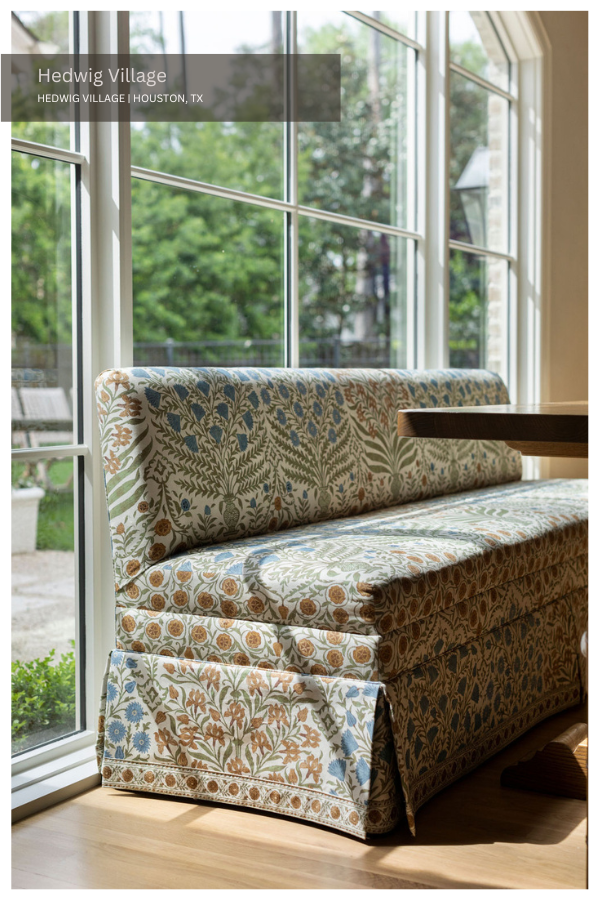
Incorporating green through textiles like rugs, curtains, and throw pillows adds a layer of neutral warmth to a space. Choosing natural fabrics such as linen, cotton, or wool in green hues contributes texture and a sense of comfort, making the space feel welcoming and lived-in.
Unlike a green accent wall which packs its own punch, using green textiles can help tie a room together, creating a cohesive look that feels intentional and polished. This is particularly effective in open-plan living rooms or kitchens, where green accents in textiles can help define different areas while maintaining a unified color palette.
How to Use Green as a Bold Accent
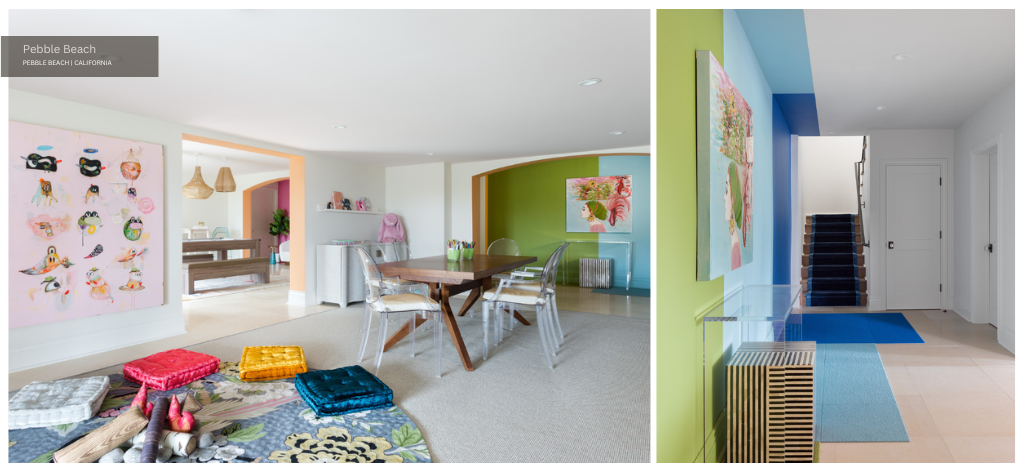
Using green as a bold accent can inject vibrancy and depth into your decor, creating focal points and adding character to a space. But remember, the key to decorating with green accents is balance. You don’t need a lot of green (i.e. monolithic green accent walls) to make an impact. Even small touches can significantly affect the feel of a space. Choose shades of green that complement your existing decor and the mood you want to create, from calming sage to energizing emerald.
Select Statement Furniture with Bold Upholstery
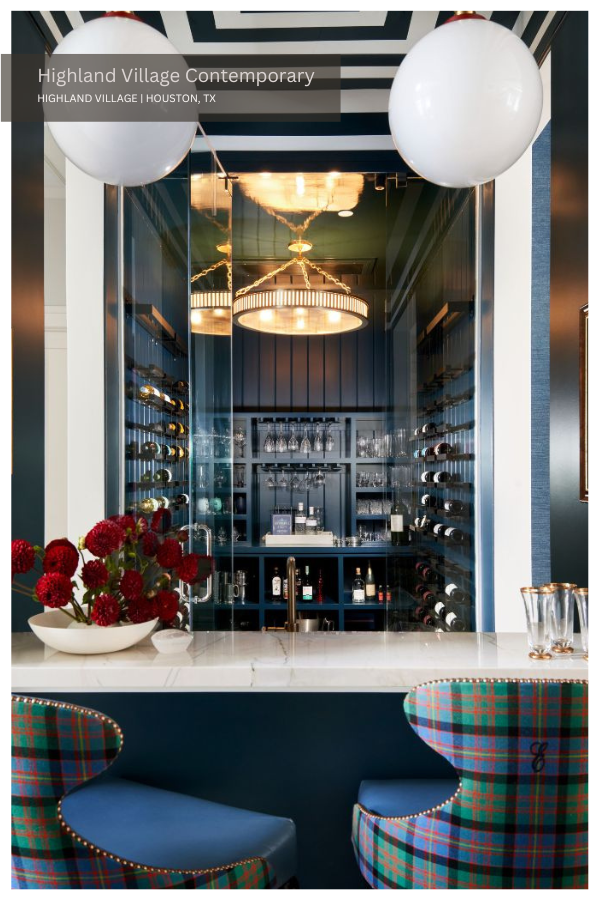
Select a piece of furniture in a bold green hue, such as an emerald green sofa or an olive green armchair. This becomes the centerpiece of the room, drawing the eye and setting the tone for the rest of the decor. To ensure the green stands out, balance it with a backdrop of neutral tones like whites, beiges, or grays. This contrast will make the green pop without overwhelming the space.
Create an Accent Wall with Paint or Wallpaper
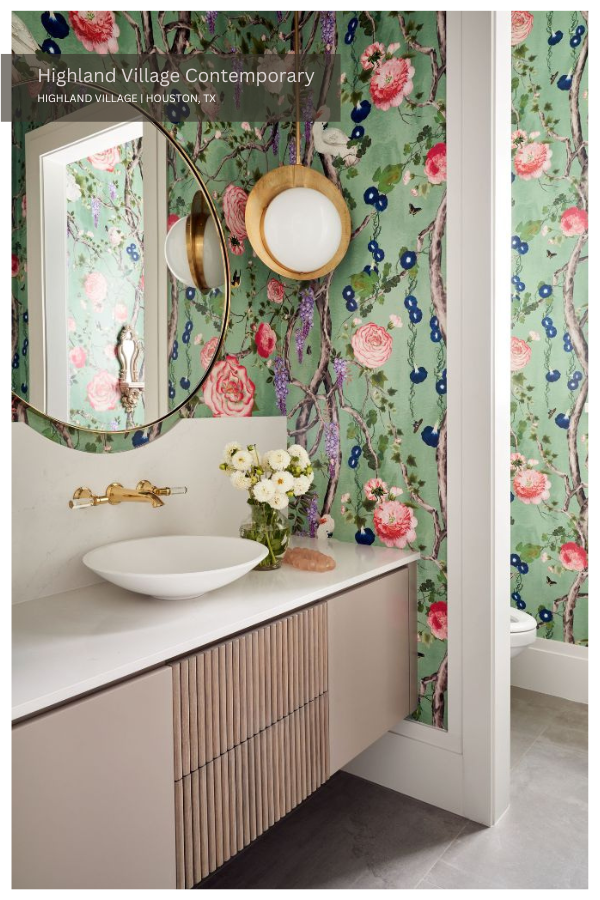
Select a wall to paint in a striking shade of green. This can define a specific area within a room or bring attention to an architectural feature. Consider a wallpaper with a green background or green patterns. Wallpaper can add texture and depth, making the accent even more pronounced.
Add Color to a Neutral or Minimalist Space with Green Accents in Art and Decor

A large piece of art that features vivid green tones can serve as a bold statement. This works well in spaces with minimal decor, where the art becomes the focal point. For example, the dining room of our Pebble Beach project (right) and the primary bedroom of our Colonial Drive project (left) use green accents in art and decor to make neutral spaces a bit fresher and more complex.
As always, we recommend using a collection of green items, such as vases, lamps, or decorative pillows, grouped together for impact. The repetition of green in various textures and shades can create a bold and cohesive look.
Embrace Botanical Accents to Bring the Outdoors Inside
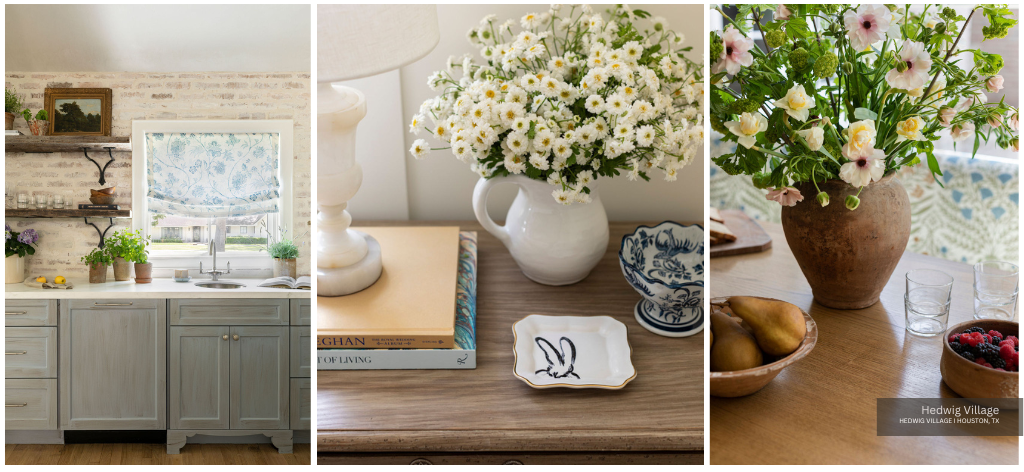
With the right botanical accents, you could transform your home’s interior into an eternal Spring. Large indoor plants with vibrant green leaves can act as living decor, adding freshness and vitality to any room. Consider placing a large plant in a colorful planter for an extra pop. Similarly, draw inspiration from nature with motifs in wallpaper, upholstery, and tiling.
Don’t Forget About Decorative Lighting
Using decorative lighting with green shades or glass is a sophisticated way to introduce a bold accent of color into your space. Lighting plays a crucial role in the overall ambiance of a room, and when you select fixtures with green elements, you achieve both aesthetic beauty and functionality.
The shade of green you choose can significantly affect the ambiance. A bright lime green might bring energy and playfulness, suitable for creative spaces or children’s rooms, while a deeper emerald or forest green can add sophistication and depth, ideal for living rooms or bedrooms. The material of the green element in your lighting can also impact the overall effect. Green glass can create a soft, diffused light that adds a tranquil vibe to the space. In contrast, a green fabric shade might offer a more muted, cozy light. Metal fixtures with green finishes can add a modern, industrial touch.
While green pendant lights pack a sizable punch in any interior, we love the unique look offered by sconces. Green wall sconces can add architectural interest and a layer of warmth to walls, especially in hallways or flanking a bed or sofa. They provide a soft, ambient light that can highlight the green hue, making it a subtle yet effective accent.
Before You Go…
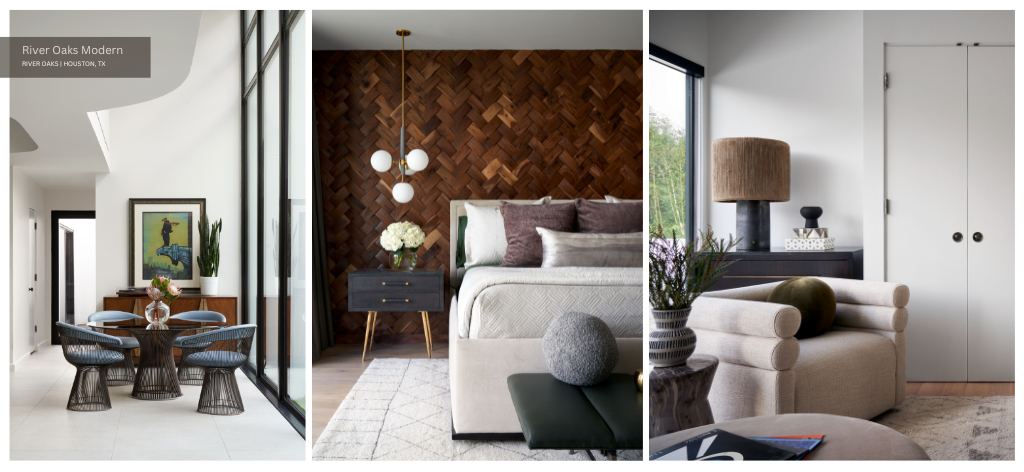
Before you run to your local hardware store for a pail of Sherwin Williams or Benjamin Moore, let’s review. Remember, different shades of green can evoke different moods. Brighter greens tend to energize a space, while deeper greens can add sophistication and depth.
Combining various textures (e.g., velvet, linen, glass) in green accents can add complexity and interest to your decor. Incorporating green as a bold accent allows for creativity and flexibility in designing a space that feels both lively and tailored to your personal style, but using it as a neutral can make an interior calming and timeless.
If you love the idea of a green accent wall color or a neutral interior inspired by nature but are unsure how to begin, reach out to our team at LUDC. We would love to bring your vision to life.


